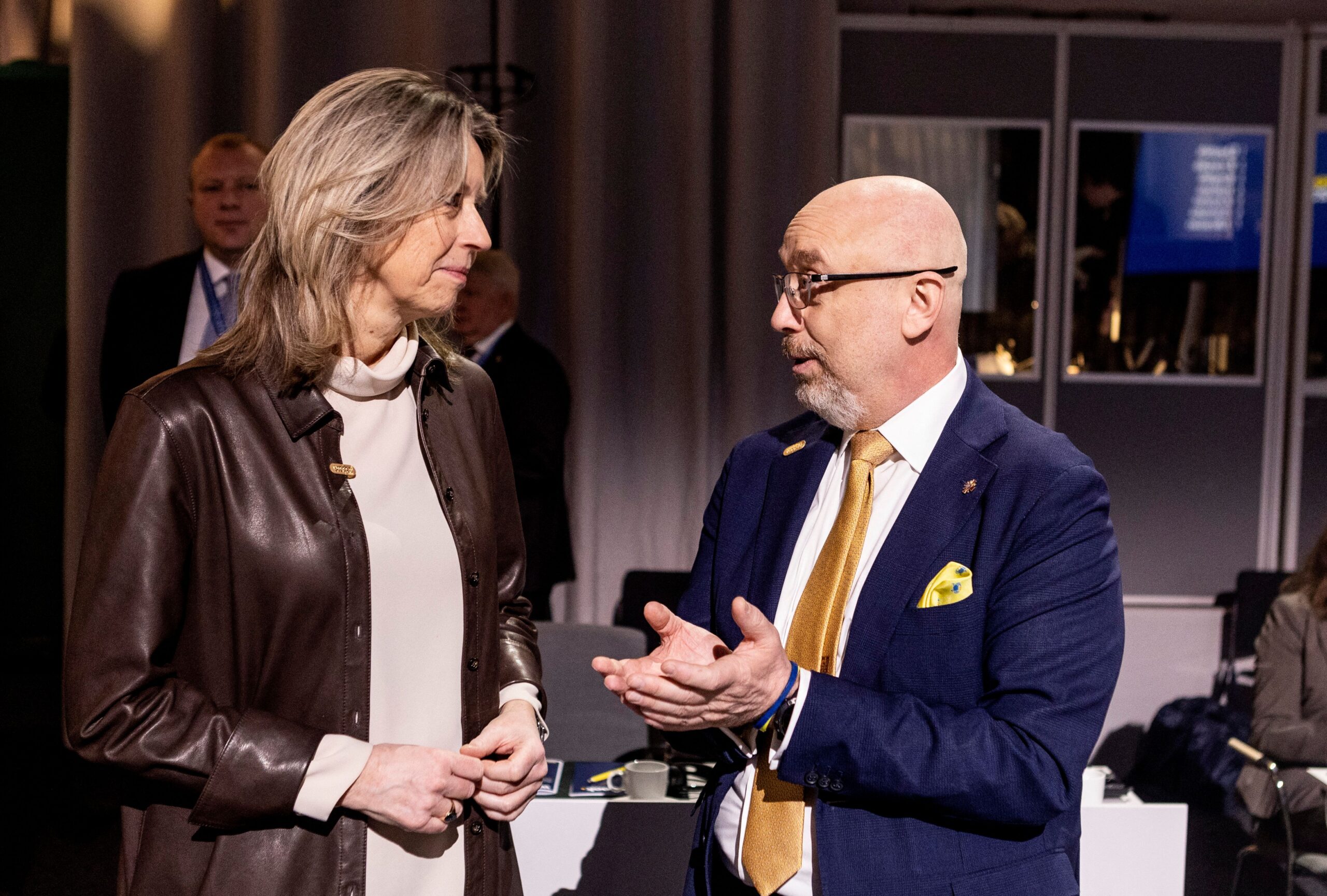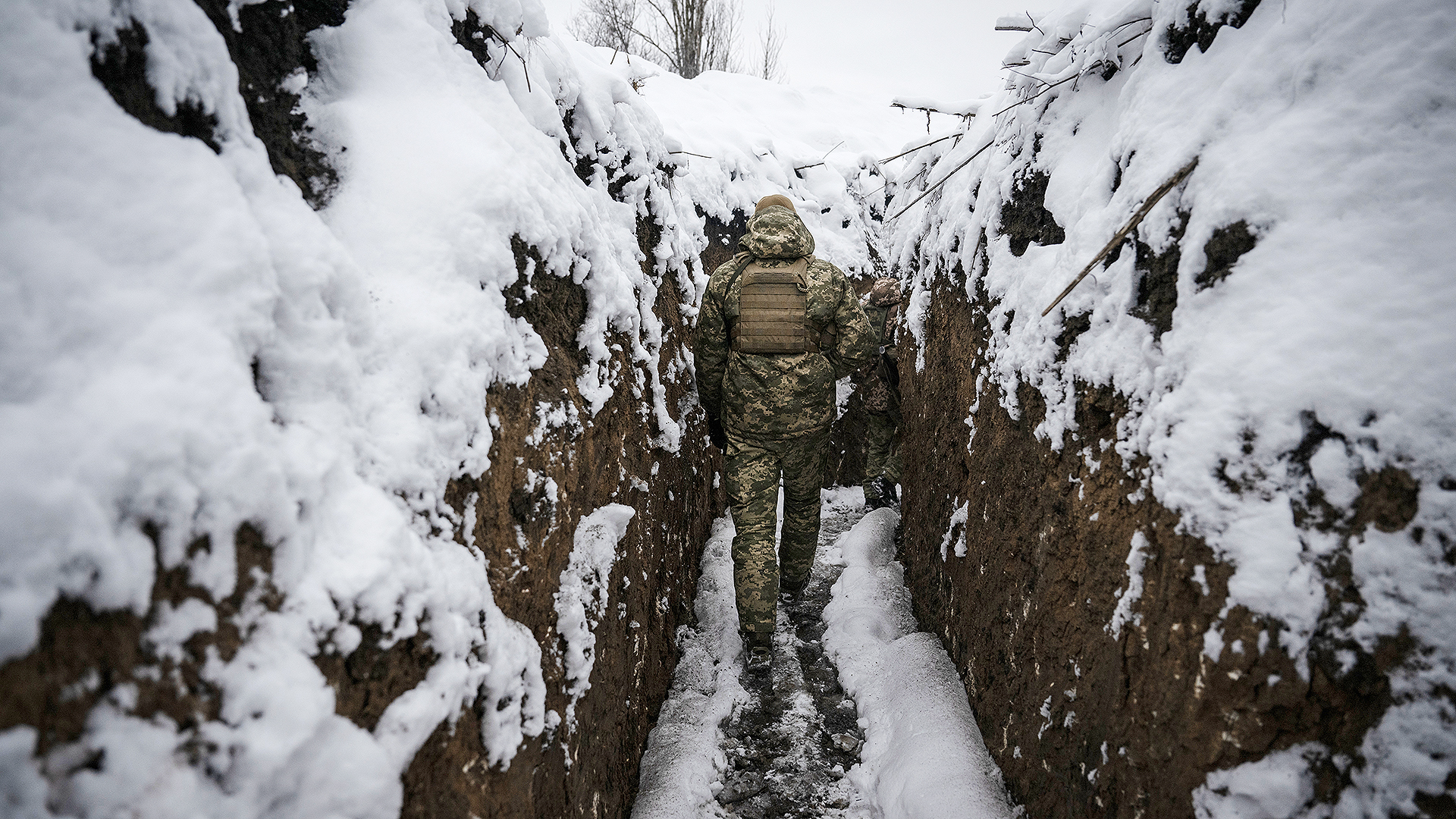Russia is throwing “waves” of soldiers toward the embattled Ukrainian city of Avdiivka, in the east of the country, suffering heavy losses in the process. Launched in October, the latest Russian efforts to capture the strategically important city have so far achieved little. New details about the operation are provided in a report from the battlefield by AFP.
“The fields are just littered with corpses,” Oleksandr, a deputy of a Ukrainian battalion in the 47th Mechanized Brigade, told AFP.
“They are trying to exhaust our lines with constant waves of attacks.”
The change of tactics — with Russia increasingly employing infantry attacks — reflects earlier experience with a massed armored assault on the city. Back in October, more than 200 Russian armored vehicles were lost in a failed attack on Avdiivka, Western officials believe.
“Columns of tanks and armored personnel carriers were advancing,” recalled a Ukrainian drone operator who gave his callsign as “Trauma.”
“But they fell into minefields, were hit by drones and anti-tank missiles.”
Russian soldiers now typically advance at night, in groups of five to seven fighters, Trauma told AFP.
“Then early in the morning, they launch their attack.”
In response, Ukraine is employing diverse weapons including artillery, mortars, grenades, and drones, as well as the 25mm Chain Gun cannons fired from U.S.-supplied M2 Bradley infantry fighting vehicles — a type seen in the video embedded below.
“Some die, others keep on coming. It’s like a zombie movie,” Trauma added.
Before we head into the latest updates from Ukraine, The War Zone readers can catch up on our previous rolling coverage here.
The Latest
The dramatic result of the Dutch general election this week, in which Geert Wilders of the far-right Party for Freedom (PVV) gained the most votes, has led to concerns about continued support for Ukraine from the Netherlands.
Today, Ukraine’s President Volodymyr Zelensky said that he discussed “efforts to maintain European unity” in a call with outgoing Dutch Prime Minister Mark Rutte. The two leaders also talked about the issue of Dutch assistance for the Kyiv regime in the future.
The Netherlands has, up to now, been a staunch supporter of Kyiv’s war effort. Among its most notable contributions has — alongside Denmark — seen it heading up a European coalition to train Ukrainian pilots on F-16 fighters. The Dutch have also made some of their own F-16s available for this. Other Dutch arms provided to Ukraine include a pair of Patriot launchers to boost its ground-based air defenses, as well as Leopard 2 main battle tanks.
In his conversation with Zelensky, Prime Minister Rutte reinforced the fact that “the Netherlands stands with the people of Ukraine.”
Meanwhile, Dutch Minister of Defense Kajsa Ollongren admitted that she was “worried” about how the PVV would handle future military support to Ukraine, Reuters reports.
Ollongren said today that “in the Netherlands, there is broad support for our help to Ukraine”. She added: “I hope and expect this will not change in the new parliament. But the PVV is now the largest party and they have never been enthusiastic about support to Ukraine. They have even been pro-Russia at times. So that has me worried.”

The general election in the Netherlands is just one example of how Western support for Ukraine is highly dependent on Europe’s changing political landscape.
Also today, Robert Fico, Slovakia’s populist prime minister, said he considers the war between Ukraine and Russia to be a “frozen conflict.”
Fico won an election in September on a campaign that included a pledge to halt state military aid to Ukraine. Earlier this month, a planned Slovakian aid package to Ukraine, estimated to be worth around €40.3 million (about $43 million), was canceled by the new government.
Perhaps with one eye on the developments as regards the Netherlands, Andriy Yermak, the head of the Ukrainian president’s office, today stated that “strengthening Ukrainian military industry is an investment into European and global security, not just Ukraine’s.”
One country that is continuing to provide significant military support to Ukraine is Canada. Today, Prime Minister Justin Trudeau confirmed that Canada will hand over 11,000 assault rifles and ammunition to Ukraine.
The U.K. Ministry of Defense said today that Russian forces in Ukraine were continuing to suffer very heavy casualties from Ukrainian long-range precision strikes well behind the front lines.
In its latest Defense Intelligence update on the situation in Ukraine, the U.K. Ministry of Defense pointed to an incident on November 10, when likely over 70 Russian troops were killed in a strike on a convoy of trucks 14 miles behind the front line in the village of Hladkivka, in the Kherson region.
It also noted that, on November 19, a strike on Russian troops attending an award ceremony or concert in Kumachove, 37 miles inside Russian-controlled territory, likely caused “tens of casualties.”
At the same time, the account states that Ukrainian forces are also proving vulnerable to similar incidents. Notably, a Russian ballistic missile killed 19 members of Ukraine’s 128th Separate Mountain Assault Brigade at a medal ceremony on November 3, as we reported at the time.
“Deployed soldiers are typically well aware of the ranges of their adversary’s weapons systems,” the U.K. Ministry of Defense concluded. “However, faced with the reality of very long combat deployments, commanders face an acute dilemma. They must balance the best practice of keeping the troops dispersed, and less vulnerable to strikes, and the day-to-day requirement to gather units together to conduct administration and to maintain morale.”
Another effect of the increasing Ukrainian ability to strike Russian targets far from the front lines can be seen in reports that Russian and Chinese business interests have been discussing the feasibility of a project to construct a tunnel to connect Russia and the Russian-occupied Crimean peninsula. This comes after repeated Ukrainian attacks on the Kerch Bridge that connects the two.
In a related tweet, previously unseen footage has appeared showing the major explosion that rocked the Kerch Bridge in October 2022, causing portions of the Crimea-bound road segment to collapse and causing several oil tanker wagons on the rail section to catch fire.
Russian officials and a “senior Ukrainian official” speaking to The New York Times said the explosion was caused by a bomb loaded onto a truck.
Finland temporarily closed all but one of its eight passenger crossings to Russia, Reuters reported today. The move is designed to stem the high flow of migrants entering the Nordic country from Russia.
In recent weeks, more than 700 migrants from countries including Afghanistan, Kenya, Morocco, Pakistan, and Somalia have entered Finland via Russia.
Finnish Prime Minister Petteri Orpo said today. “We want to send a clear message to Russia: this must stop. This is a question of hybrid attacks and of national security.”
More border news now from Poland, where protests by Polish truckers are reducing Ukrainian exports that are vital for its economy. Ukraine said that it wants its export routes via Poland unblocked before it holds talks with Warsaw and the European Commission aimed at ending the standoff. Polish truckers say Ukrainian truckers are entering Poland and hauling goods around Europe, undercutting their prices and putting their businesses at risk.
According to Ukrainian officials, a Russian attack using cluster munitions killed three people in a suburb of the southern Ukrainian city of Kherson. Meanwhile, Russian shelling killed another two people in the Donetsk region, Ukraine’s presidential office said.
The use of cluster munitions, in particular, looks to have been stepped up a notch, with the apparent Russian integration of guidance packages and wing kits on cluster bombs, providing them with standoff range, something you can read more about here.
As well as air-launched standoff munitions, Ukraine continues to battle with Iranian-designed one-way attack drones, launched against critical infrastructure targets, in particular.
Ukraine’s defense ministry today released night footage of one of its mobile fire ‘drone hunter’ groups deployed to counter the Shahed drones.
U.S. Ambassador to Ukraine Bridget A. Brink today said that, as of today, 153 ships carrying over 5.6 million metric tons of grain and other cargo have passed through Ukraine’s Black Sea humanitarian corridor. The corridor came into being this summer, as a way of releasing cargo ships trapped in Ukrainian ports since the outbreak of war, in the face of a de-facto Russian maritime blockade after Moscow abandoned a deal to let Kyiv export grain. Since then, related Ukrainian infrastructure, including ports, have come under frequent Russian attacks.
Nevertheless, Ukraine’s grain exports so far in the 2023-24 season that started in July are running 28 percent below the earlier year’s volume, according to agriculture ministry data.
Earlier this week, we reported about how the fall weather in Ukraine had become especially nasty. The notorious ‘muddy season’ is certainly slowing things down for Ukrainian and Russian troops across an already stagnant battlefield. Now, winter is coming, with the challenges of snow and freezing temperatures being added to the mix, as these next photos illustrate.
The vehicles comprise two Western-supplied types that are not seen altogether frequently in Ukrainian service: a British-made Challenger 2 main battle tank and a German-produced Marder 1A3 infantry fighting vehicle.
We complete our coverage for the time being with a dramatic video of a Ukrainian machine gunner, reportedly from the 3rd Assault Brigade — a unit established by a merger of the Azov Special Operations Forces — although the date and location of the incident are not available. The footage shows the machine gunner taking a bullet, apparently to the chest, but continuing to fight, laying down more suppressive fire. All in all, another testament to the value of modern body armor.
That’s it for now. We’ll update this story when there’s more news to report about Ukraine.
Contact the author: thomas@thedrive.com
